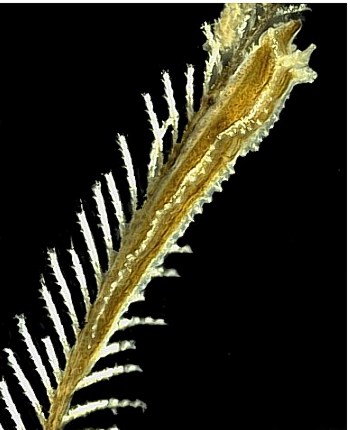
Lomanotus vermiformis
Eliot, 1908
Order: NUDIBRANCHIA
Suborder: DENDRONOTINA
Family: Lomanotidae
DISTRIBUTION
Tropical Indo-West Pacific
PHOTO
no details available
In the genus Lomanotus the edge of the mantle is developed into a sinuous ridge on each side of the body. along this ridge are short pointed cerata. Lomanotus vermiformis, as its name suggests, is particular elongate. It is always found on its food, the aglaopheniid hydroid Lytocarpus philippinus, on which it is particularly well camouflaged. It clings tightly to the hydroid with its narrow grooved foot and a very sticky mucous secretion. It thrashes wildly with lateral body flexions when removed from the hydroid. It seldom grows larger than 25mm.
Reference:
• Eliot, C.N.E. (1908) Reports on the marine biology of the Sudanese Red Sea XI. Notes on a collection of nudibranchs from the Red Sea. Journal of the Linnean Society. Zoology, 31: 86-122.
• Willan, R.C. (1988) The taxonomy of two host-specific, cryptic dendronotoid nudibranch species from Australia, including a new species description. Zoological Journal of the Linnean Society, 94: 39-63.
Rudman, W.B., 1999 (August 12) Lomanotus vermiformis Eliot, 1908. [In] Sea Slug Forum. Australian Museum, Sydney. Available from http://www.seaslugforum.net/find/lomaverm
Related messages
Lomanotus vermiformis from Malaysia
November 13, 2008
From: Brian Mayes

Dear Bill,
I found a pair of these tiny sea hares together on a sandy area at a depth of about 12 metres in the Perhentians, Malaysia.
It looks like they are feeding rather than mating. I think they are Stylocheilus striatus but I'm not sure. What do you think?
Locality: Perhentian Islands, 12 Metres, Malaysia , South China Sea, 23 May 2008, Sand between coral heads. Length: 1cm. Photographer: Brian Mayes.
Kind Regards
Brian Mayes
brian.r.mayes@gmail.com



Dear Brian,
The only thing your interesting animal has in common with Stylocheilus striatus is the pattern of longitiudinal lines on the body, but of course in Stylocheilus they are black, not white. Stylocheilus is a Sea Hare. Check out the many pages on Sea Hares, which can be found in the General Topics index for their distinguishing features.
One clue to the identity of your animal are the special retractible head tentacles [rhinophores] which are enclosed in a sheath which has a series of papillae around the rim. This shape is very characteristic of a group of the nudibranchs called the Dendronotina [dendronotoideans, dendronotaceans etc] which include well-known genera such as Doto, Melibe, Bornella, Tritonia, etc. Yours is a species called Lomanotus vermiformis which is usually found on its food, the aglaopheniid hydroid Lytocarpus philippinus. In your photos we can see the row of cerata-like papillae along each side of the mantle.
Best wishes,
Bill Rudman
Lomanotus vermiformis from St. Vincent, Caribbean
January 18, 2007
From: Paul Young

Hi Bill,
Charlotte and I were diving in St. Vincent in late December. Good diving but nudibranchs are uncommon. Anyhow Bill Tewes, the owner of Dive St. Vincent found three of these on a hydroid. I'm not going to try and gues what it is, other than "very small".
Locality: St. Vincent, 30 feet(?), St. Vincent, Caribbean, Atlantic Ocean, 27 December 2006, Sand/pebble bottom. Length: less than 1/2 inch. Photographer: Paul Young.
Do you recognize it?
Paul Young
youngp@hp.com
Young, P., 2007 (Jan 18) Lomanotus vermiformis from St. Vincent, Caribbean. [Message in] Sea Slug Forum. Australian Museum, Sydney. Available from http://www.seaslugforum.net/find/19240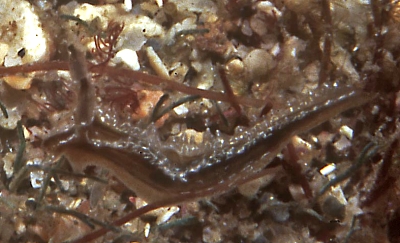
Dear Paul,
This is Lomanotus vermiformis. Have a look at the Fact Sheet and associated messages for more information.
Best wishes,
Bill Rudman
Lomanotus vermiformis from Florida, USA
May 19, 2006
From: Linda Ianniello
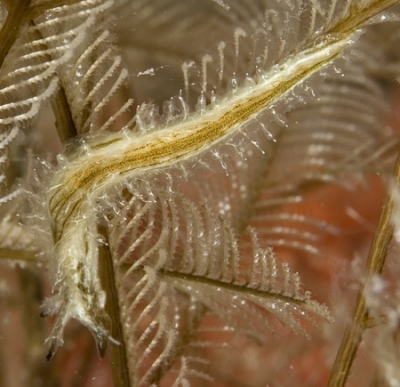
Dr. Bill,
Here is an interesting find - Lomanotus vermiformis - from a night dive. The shots show the "very sticky mucous secretion" you mention - it made it tough to even identify as a nudibranch. It looked like a jelly blob with rhinophores! There is one shot of a nudi without the mucous, which makes it easier to ID.
Locality: Lake Worth Lagoon, 15 feet, Florida, USA, Atlantic Ocean, 13 May, 2006, Intracoastal waterway, with strong tidal currents. Photographer: Linda Ianniello.
Regards,
Linda I.
lindai@us.ibm.com
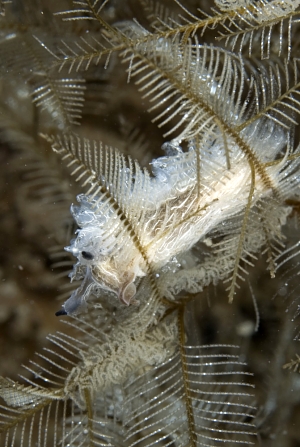

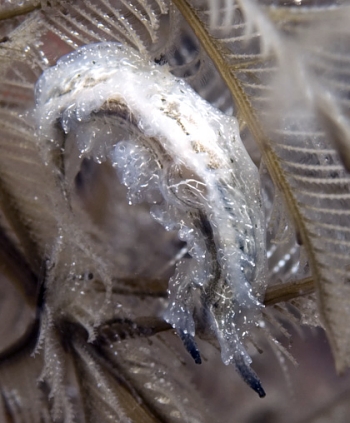
Dear Linda,
Thanks for this find. It is almost certainly the same species that was described from Florida by Clark & Goetzfried (1976) as Lomanotus stauberi. Later Gosliner & Bertsch (1985) reported it from the Pacific coast of Panama.. However Willan (1988) and Garcia-Gomez et al. (1990) consider L. stauberi to be the same as L. vermiformis which they consider has a wide distribution in the tropical Indo-west Pacific, eastern Pacific and western Atlantic. The development of 'cerata' in this species seems somewhat variable. I am pretty sure you animal is on the aglaopheniid hydroid Lytocarpus philippinus, which is the usual food of L. vermiformis. Lomanotus stauberi is also reported from this hydroid, which seems another justification for consdering it to be a synonym of L. vermiformis. As you mention, this animal is often found in a sticky mucous cocoon as is well illustrated in two of your photos. In the middle two photos you can also see an egg ribbon, which I presume belongs to Lomanotus.
-
Clark, K.B. & Goetzfried, A, (1976). Lomanotus stauberi, a new dendronotacean nudibranch from central Florida (Mollusca: Opisthobranchia). Bulletin of Marine Science, 26(4): 474-478.
-
Garcia-Gomez, J.C. & Lopez-Gonzalez, P.J., Garcia, F.J, (1990). Lomanotus barlettai, a new species of nudibranch mollusk from the Iberian littoral, with remarks on world species of the genus. Canadian Journal of Zoology, 68: 2299-2305.
-
Gosliner, T.M, & Bertsch, H, (1985). Records and morphology of Lomanotus stauberi Clark & Goetzfried, 1976, from the Panamic Pacific. The Veliger 27(4): 397-405.
-
Willan, R.C, (1988). The taxonomy of two host-specific, cryptic dendronotoid nudibranch species (Mollusca: Gastropoda) from Australia including a new species description. Zoological Journal of the Linnean Society, 94: 39-63.
Best wishes,
Bill Rudman
Lomanotus vermiformis from the Philippines [1]
February 3, 2005
From: Erwin Koehler


Dear Bill,
Here are some shots of Lomanotus vermiformis from my recent trip to the Philippines.
Locality: Malapascua Is., Gato Cave north, Visayas region, Philippines, Depth: 8 m. Length: 32 mm. 13 January 2005. in the entrance of a cave. Photographer: Erwin Koehler
Regards Erwin
www.Philippine-Sea-Slugs.com
Erwin@Philippine-Sea-Slugs.com
Koehler, E., 2005 (Feb 3) Lomanotus vermiformis from the Philippines [1]. [Message in] Sea Slug Forum. Australian Museum, Sydney. Available from http://www.seaslugforum.net/find/12998
Dear Erwin,
Thanks for these excellent photos of this interesting animal. In the close-up alongside you can see the rhinophore sheath, a character unique to the dendronotoacean nudibranchs.
Best wishes,
Bill Rudman
Lomanotus vermiformis from the Philippines [2]
February 3, 2005
From: Erwin Koehler
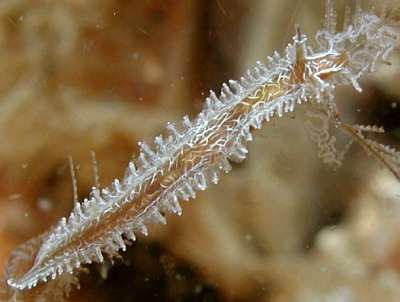
Dear Bill,
Here are some more shots of Lomanotus vermiformis from my recent trip to the Philippines.
Locality: Malapascua Is., Gato Cave south, Philippines, Visayas region. Depth: 12 m. Length: 22 + 16 mm. 14 January 2005. in the entrance of a cave. Photographer: Erwin Koehler.
Regards Erwin
www.Philippine-Sea-Slugs.com
Erwin@Philippine-Sea-Slugs.com
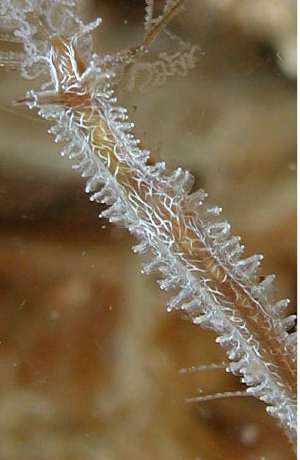

Dear Erwin,
Thanks for these and your earlier photos, they certainly give us a wonderful view of the external shape and colour variation in this species.
Best wishes,
Bill Rudman
Lomanotus vermiformis from Thailand
August 14, 1999
From: Erwin Koehler
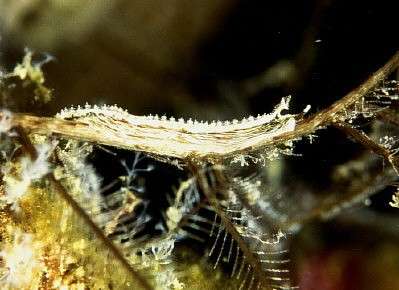
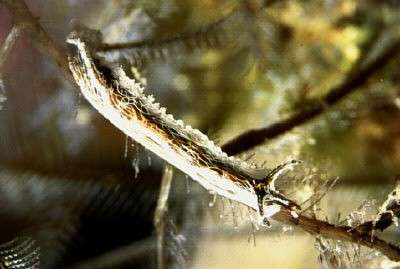
Bill,
Again two photos by Georg Heinze, Thailand, Similan Is., March 1999,
depth and size unrecorded.
Erwin
Medslugs.Koehler@t-online.de
Koehler, E., 1999 (Aug 14) Lomanotus vermiformis from Thailand. [Message in] Sea Slug Forum. Australian Museum, Sydney. Available from http://www.seaslugforum.net/find/1182Dear Erwin,
Georg's animal is the cryptic Lomanotus vermiformis. It is certainly worm-like, as its name suggests, an apparent adaptation for hiding on the 'fronds' of the hydroid Lytocarpus on which it lives and feeds.
Bill Rudman.
